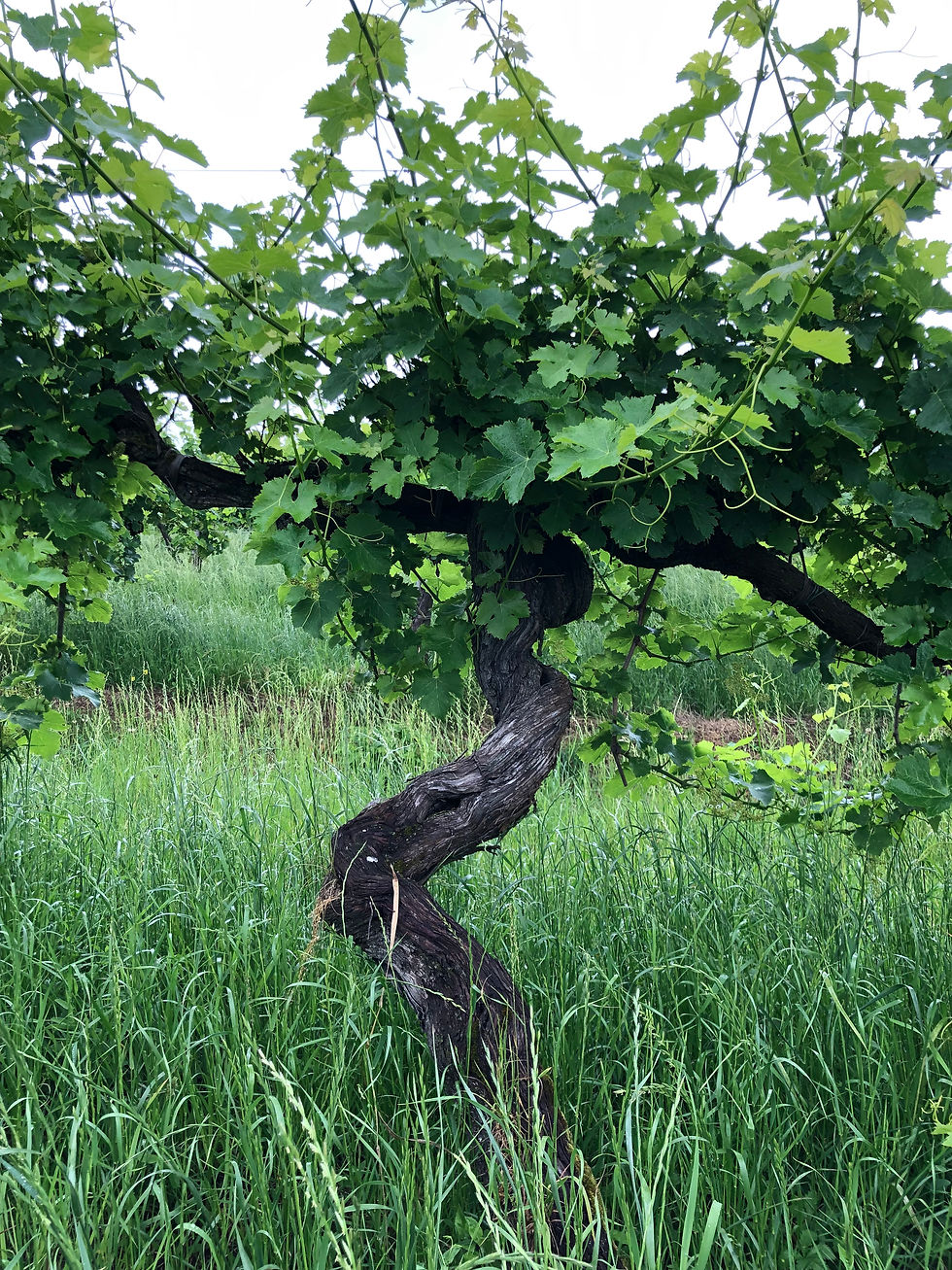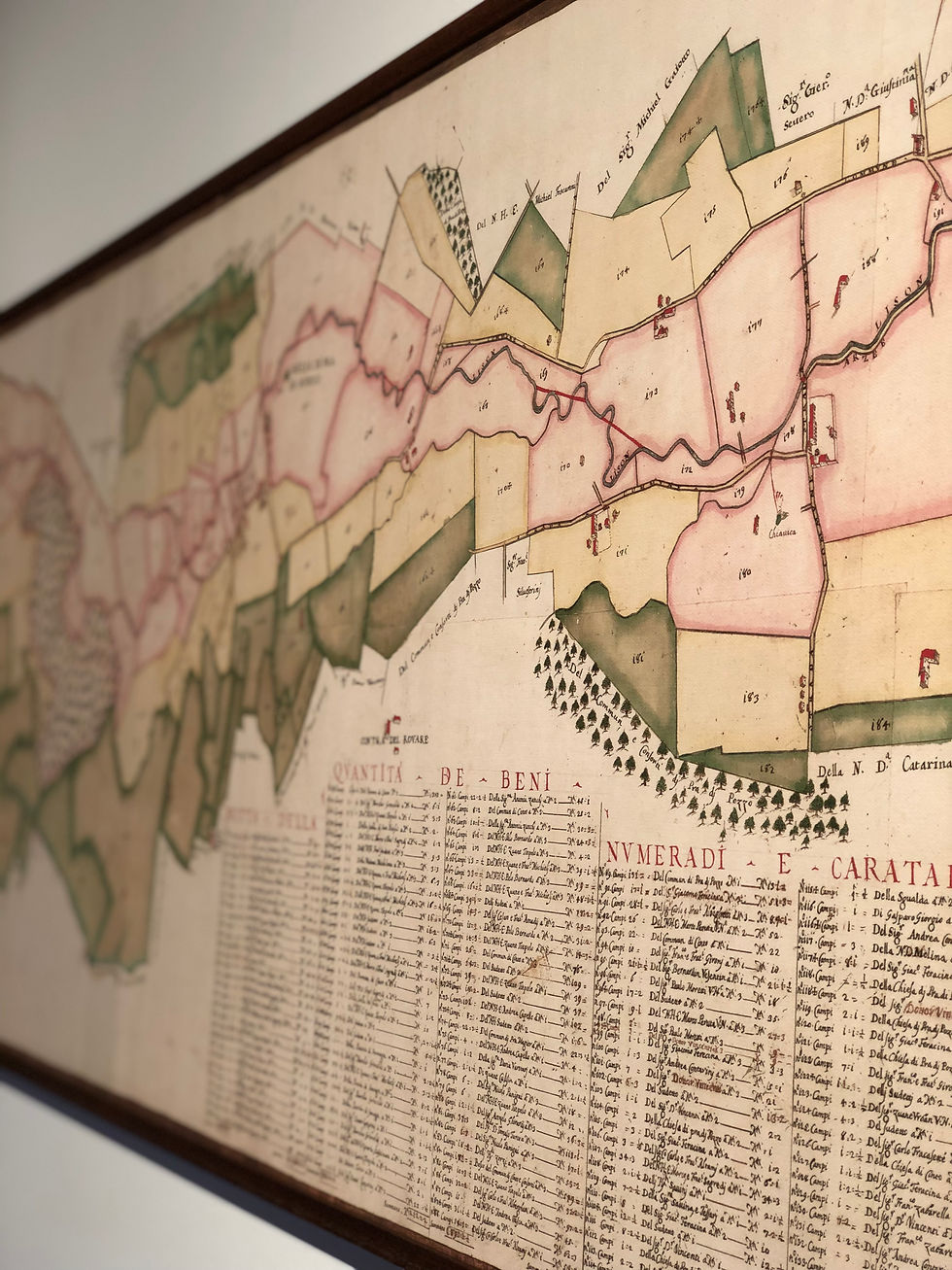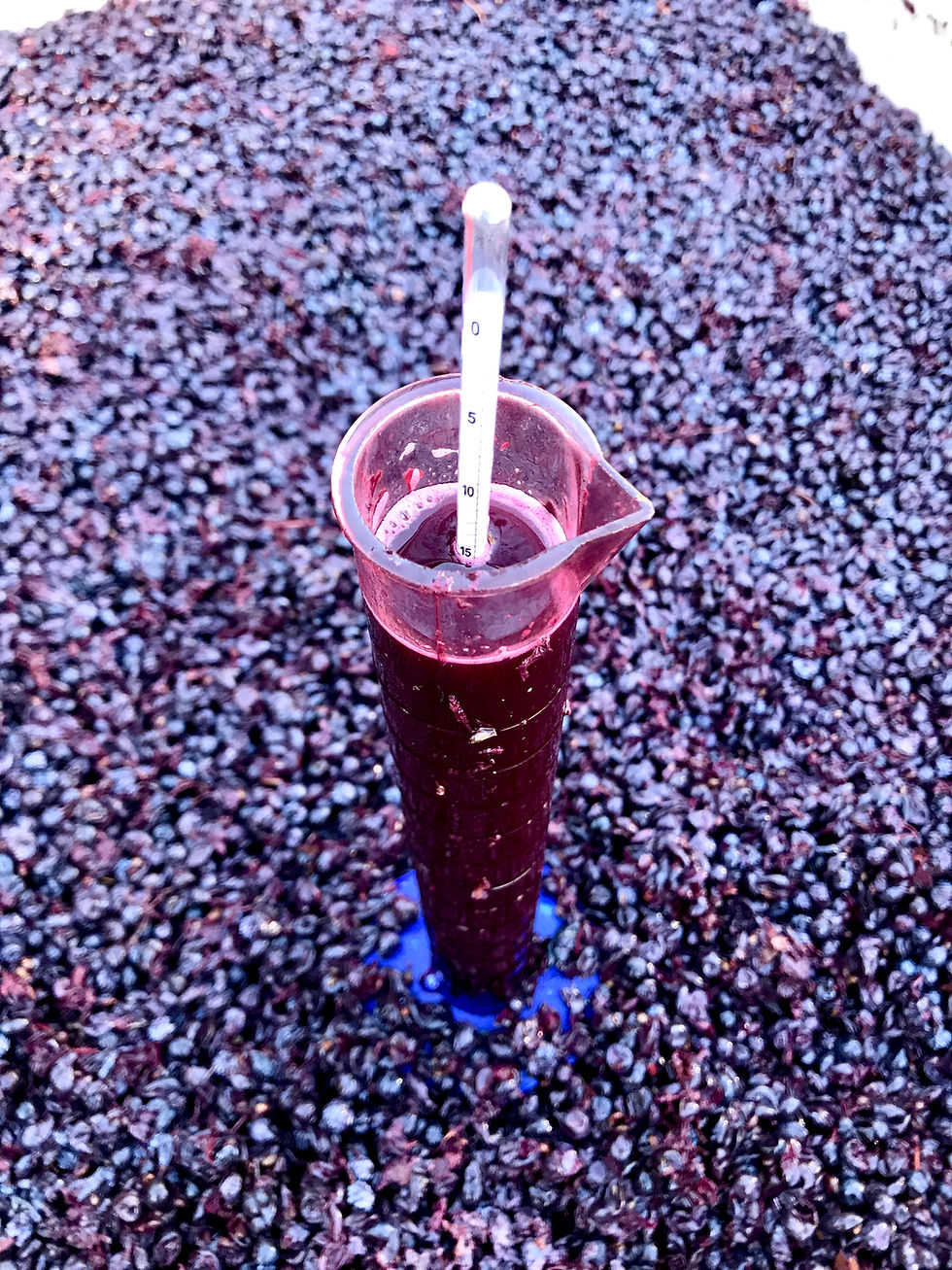Friulano - Delicious by Any Name
- Pietro Buttitta

- Sep 3
- 10 min read
Updated: Oct 4

Fat, flabby, greasy. How can such a grape also be the treasure of Northeast Italy? It's no surprise that Friulano (also known as Tai and Lison in Italy or Tocai Friulano in the US) treads a confusing path like almost every other grape associated with Italy, and its history in California introduces even more head scratching. It is considered identical to Sauvignon Vert (which we will visit in depth) and Sauvignonasse. In Italy’s northeastern regions of Friuli and Veneto Friulano stands tall. It is of vague French extraction, and is often paired in those Italian regions with another French foreigner in Merlot. Just as Carménère was mistaken for Merlot in Chile – and produced puzzling pyrazine monsters for some time — so too Chile had also accidentally swapped what it thought was Sauvignon Blanc with Sauvignon Vert (Friulano) which produced mysteriously bland and flat Sauvignon Blanc. How is it that Friulano can do something so different in Italy? The names lend more confusion since Sauvignon Blanc (going back to the 1500’s) likely preceded Sauvignon Vert (going back to the 1700’s) in SW France, but the two in fact are not related genetically at all. It is speculated that Friulano migrated to Friuli in the early 1700’s and may have been cemented there well before the Austrian Empire. By 1820 it was known in Friuli as “Tocai” and while Sauvignon Vert/Sauvignonasse was mainly a lowly production workhorse and neutral blender in France, and eventually California, it seemed that some synergistic magic happened in Italy, and what was once a lowly workhorse grape blossomed into a very specific and DOCG-recognized powerhouse. But before going to Italy, let’s focus on California’s largely unknown history with Sauvignon Vert and Friulano’s bloodline.
In California Friulano’s history — which is also Sauvignon Vert’s history — is equally fuzzy, and no less intriguing. The first unanswerable question is: how many Italian immigrants actually brought vine cuttings with them, possibly including Friulano? Sadly, we really have no idea, and we can speculate endlessly about random vines of Nero d’Avola or Teroldego populating California vineyards pre-phylloxera. It is hard to imagine that no one brought anything, but times were desperate and the trip was long. My own family certainly didn’t bring anything from Palermo. However, it would be hard to understate the growth and expansion of the California wine industry in the late 1800’s and the tremendous influx of vines and cross-ocean trade in a million-dollar booming industry. Agoston Haraszthy claimed to have 300-2000 (depending on who asked) different cultivars in Sonoma in 1860, and we know Henry Crabb had hundreds growing in Napa Valley. They were not alone, and the scattered records read like a mysterious rolodex; we dreamily salivate with the possibilities.
Focusing on California, what we do know fairly well (thank you Charles Sullivan) is that Sauvignon

Vert probably landed in California around 1860 with Charles Lefranc’s initial importation and vinification of Bordeaux varieties near San Jose, and contemporaneously appeared as just plain “Sauvignon” or “Madeleine” around the same time. The documentation is thin, however, and though Charles Wetmore is credited with the first Sauvignon Blanc importation to Livermore as Chateau d’Yquem clones (because, of course they were) there is a good chance that it had already landed but was mislabeled (or alternatively-named) as so many grapes were, or simply called Sauvignon or Yquem. The Semillon documentation is quite fuzzy as well.
In Amerine & Winkler’s landmark 1944 study, both Sauvignon’s Blanc and Sauvignon Vert are listed. Vert is noted as widely distributed and receives a relative value of 45 out of 100 and a sad “not recommended” ranking below Bombino Bianco which could work in Zone 5. The entry is fascinating, and like many other cultivars the observations are eerily accurate and also attuned to a different climatic sensibility:
Sauvignon Vert.—The Sauvignon vert is widely distributed in California. [...] The
grapes are very subject to rot in wet seasons and locations and also to attack by
insects. Their quality for crushing is often unsatisfactory.
This variety has been tested throughout California. [...]
The wines have had a marked tendency to spoil, owing to the very high pH
of the musts. The flavor is common and lacks softness. The aroma is almost
always very distinct, frequently being very aromatic and sometimes even having
a muscat quality. [...] Of the commonly planted white wine grape varieties of California the Sauvignon Vert least deserves a permanent place. Its musts are unbalanced, and
its fruit is poor. The wines are undesirable in flavor as well as composition.
To say that Sauvignon Vert was widely distributed in 1944 seems like a bold claim, but remember that a huge amount of Mission was still being grown across California, and we were bottling wines of style, not by cultivar. The operating paradigm was quite different then. In contrast to the Vert, Sauvignon Blanc received a princely 78, and the entry is equally fascinating, given the amount produced today in zones III-IV:
Sauvignon blanc.— [...]
Because of its low production, the Sauvignon blanc should be considered
only for the best-quality wines. It has been tested in all the regions of California.
[...] The distinctive flavor is carried over and even increased in the wine,
whether the grapes are produced in the coolest or the warmest region. [...] The distinct aromatic flavor is so strong that in some regions and years it may have to be blended with a
more neutral-flavored variety to achieve consumer acceptance.
Just as in Europe, phylloxera permanently altered the face of viticulture in California, and many recently introduced bloodlines were lost, including Wetmore’s original Sauvignon Blanc planting, though the genes remain alive as clone FPS 01 today (which is also the foundational clone of New Zealand’s Sauvignon Blanc behemoth). We know that some Sauvignon Vert acreage persisted through Prohibition for jug wine, and the 1968 crop acreage report lists about 1,000 acres of it, mostly in the North Coast region but exactly where is unclear. It was also documented through ampelographic evidence that most Sauvignon Blanc in California well into the 1960’s was in fact Sauvignon Vert. The Sauvignon Blanc story detours and then charges ahead here with Robert Mondavi and his Fumé Blanc creation in 1968 and the exquisite Jackson Station story in Amador, but that wine geek’s drama will be explored at another time…
In California our legacy bottling of Friulano was probably Larkmead’s Friulano-heavy field blend (labeled as Tocai Friulano) from vines going back to 1900-ish. The fruit was sold to others until they started bottling it in 2006, but the diseased vines were retired in 2016, though a new block of Friulano was planted nearby. A bit of acreage persists in Chalone, and I have personally made it from Fox Hill Vineyard on Talmage Bench and a vineyard that Greg Graziano manages, both in Mendocino County. The USDA crush report shows 73 tons harvested for 2024, though many growers don’t bother to report small quantities, and some is undoubtedly in mixed vineyards and is not accounted for. Graziano’s planting (or at least he manages the planting) in Potter Valley is particularly successful, with excellent results from stainless to skin-contact to botrytised production.

Now that we have completed the California portion of the story, our Friulano/Sauvignon Vert story necessarily moves us to Europe. The glaring question remains the same: if Italian Friulano is really the same grape as lowly Sauvignon Vert which was not well regarded in France, how could it be so banal and bland when I am about to shower praise on Friulano’s body and ample stone fruit and near-tropical aromas? We have already mentioned that Chilean plantings in the 1980’s and 1990’s that were thought to be Sauvignon Blanc had the same disappointing problem as they proved to be bland Sauvignon Vert rather than piercingly-aromatic Sauvignon Blanc. Both vines are vigorous and upright growing, and visually there could be some confusion. The simplest answer has to do both with place and the malleability of clones leading to two general biotypes of Friulano which are recognized today. The green type is aromatic but quite bland on the palate and probably the Sauvignon Vert of legacy in California and Chile, while the yellow type is aromatic and full of body, and while this yellow family of clones is still genetically Sauvignon Vert, but it enjoys a more flavorful and aromatic life as Friulano. As we know, clones can develop their own trajectory with human help and historical chance. We can assume that the French type in the 1700-1800’s was green clone Sauvignon Vert, while the Italian Friulano later mutated and developed into its own fully-formed being with the dotted yellow clone taking the lead. Graziano’s clone is clearly that same yellow type with a golden hue and the characteristic “puntinata” speckling. Vivai Rauscedo in Italy currently propagates six clonal selections, and the green and yellow clones seem relatively clear in pictures and wine profile assessment.
Let’s detour briefly through farming and winemaking. Let's assume that your Friulano vineyard is in the proper location with a mild ripening window to maintain its modest acid, allowing slow development with cold nights while controlling what is a pretty vigorous vine, and modest rainfall to challenge botrytis-susceptible thin skins. However, it rains a lot in Veneto and Friuli - far more than California’s North Coast, and the summers are extremely mildew-prone and humid, so Friulano must have some inherent resilience. In the winery it offers a couple surprising hacks. For one, Friulano is the strange white wine that loves oxygen, and not just to precipitate phenols. Stainless versions need careful lees handling to control reduction, and neutral barrels work very well, which allows smaller wineries without expensive equipment to still make compelling wine. With thin skins the yield is quite good, and they are not too tannic or bitter, which allows options when pressing and vinifying. The great challenge is acid retention, and while we can freely add it back in California, the balance is never the same. In Friuli this service is often rendered by Ribolla Gialla, and acid retention highlights the need for cold nights in California, with warm days for phenolic ripeness.

When I visited the Lison DOCG (one of only two DOCG’s for Friulano, the other in Friuli naturally where Rosazzo DOCG is a Friulano-based blend) just north of Venice, Villa Bogdano 1880 was growing both green and yellow clones and they both had their place and function in the final bottlings. While Friulano acreage has declined over the decades, Friulano has been the key producer in this area for over 150 years, and both clones have been known for a long time. Not surprisingly they agreed that the green type can lend zip and an underlying herbal note while the yellow clone is rich with stone fruit aromatics and is the focus, and in fact they have isolated three different biotypes of yellow clone. The bulk of their vines are well over 50 years old with some over 100. The coexistence of the two types is not a new invention.
The climate and growing conditions in the Lison DOCG are a different type of extreme viticulture. This area is the opposite of high-altitude volcanic rock water stress. Located just six meters above sea level and on heavy alluvial clay (over 50% clay content) that is only around two feet deep and overlying “caranto” limestone, this unusual terroir was a new form of challenging viticulture to me. Wet feet and water mitigation is the focus here, along with unpredictable weather, extreme winds, hail, and environmental pressure from humidity. Many vineyards feature deep ditches to drain excess water every few rows, and the heavy clay actually suppresses vine vigor to some extent. Vines need space to expand to balance growth and cover crops are a must. Yields are quite low in the hypoxic soil and given that these are all old vines, Friulano’s productive nature is severely reduced here, benefiting the wines. Vines are also trained higher for ventilation and wide cross arm lyre systems are common. Aggressive hedging and choking up the fruiting zone with laterals would be a mistake here. It is worth noting that Merlot does exceptionally well here as well, its love of clay balanced by the devigorating of old vines can produce magic of its own.

Given that Friulano has something of Chardonnay’s malleability, it is not surprising that the warm Venetian Plain has very real vintages and can certainly produce wines that bridge the California-Italy divide in being rich and ripe while maintaining atavistic tension with the past. A touch of oak? Block ML? Battonage? Stainless? All are viable options. Medium+ body is the game, but we must accept that Friulano is not a “crunchy white” that is taut with acidity, but rather a pretty aromatic grape that is round. Acidity is not the feature here, but rather its job is to be sufficient to carry the body and support the fruit and aromatics. Friulano needs ripeness like Roussane and picking simply on acid can put it back into bland Sauvignon Vert territory. It is a late ripener and needs that final push with a cool and slow landing to stick the flavor balance. While I don’t see much interest in its temperamental nature leading to vast planting in California, it offers a fascinating take on heavier white wines that may be out of vogue for the moment, it has compelling drinkability and I have no doubt it will circle back into modest popularity, and frankly, it is a winemaker’s grape and fun to work with.
Villa Bogdano 1880 - 185 Bianco IGT Veneto
The vines here are over 70 years of age, 10% of juice is fermented in barrique, 18 months in lined concrete. The bit of oak helps push roundness to a new level with full-on lemon curd and tropical fruits galore, but not as terpenic as Roussane or a Muscat. It trades the mineral energy on the finish for more body up front, but it is crystal clean rather than mushy and jumbled. Interestingly, this wine was the best for all tasters with prosciutto, the round body allowing the sanguine salty/minerally character of the meat to shine, like melon and prosciutto in liquid form.
Villa Bogdano 1880 - Lison Classico (DOCG)
In this bottling the vines average over 75 years of age and the wine spent eight months in lined concrete with battonage, and had prefermentation cryomaceration. Pure yellow fruit explosion, with a ripeness belying 13%. This reminds me of Potter Valley Friulano with savory spice, papaya, pepper and a suggestion of curry leaf balancing all the ripe fruits and body. Richness is balanced by sufficient acidity as mentioned, malolactic blocked to keep the edge. Really nice purity here, and lovely on its own. Not quite full bodied, and not as round as the 185 Bianco above, but showing the face of pure, ripe Friulano. Balance is achievable after all!





